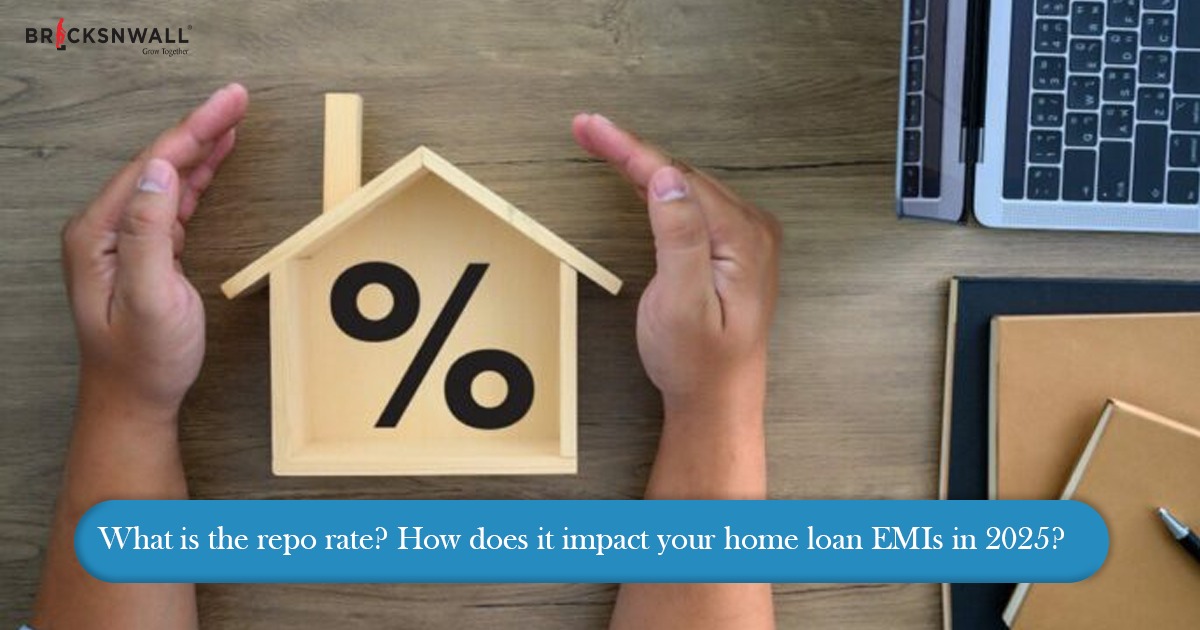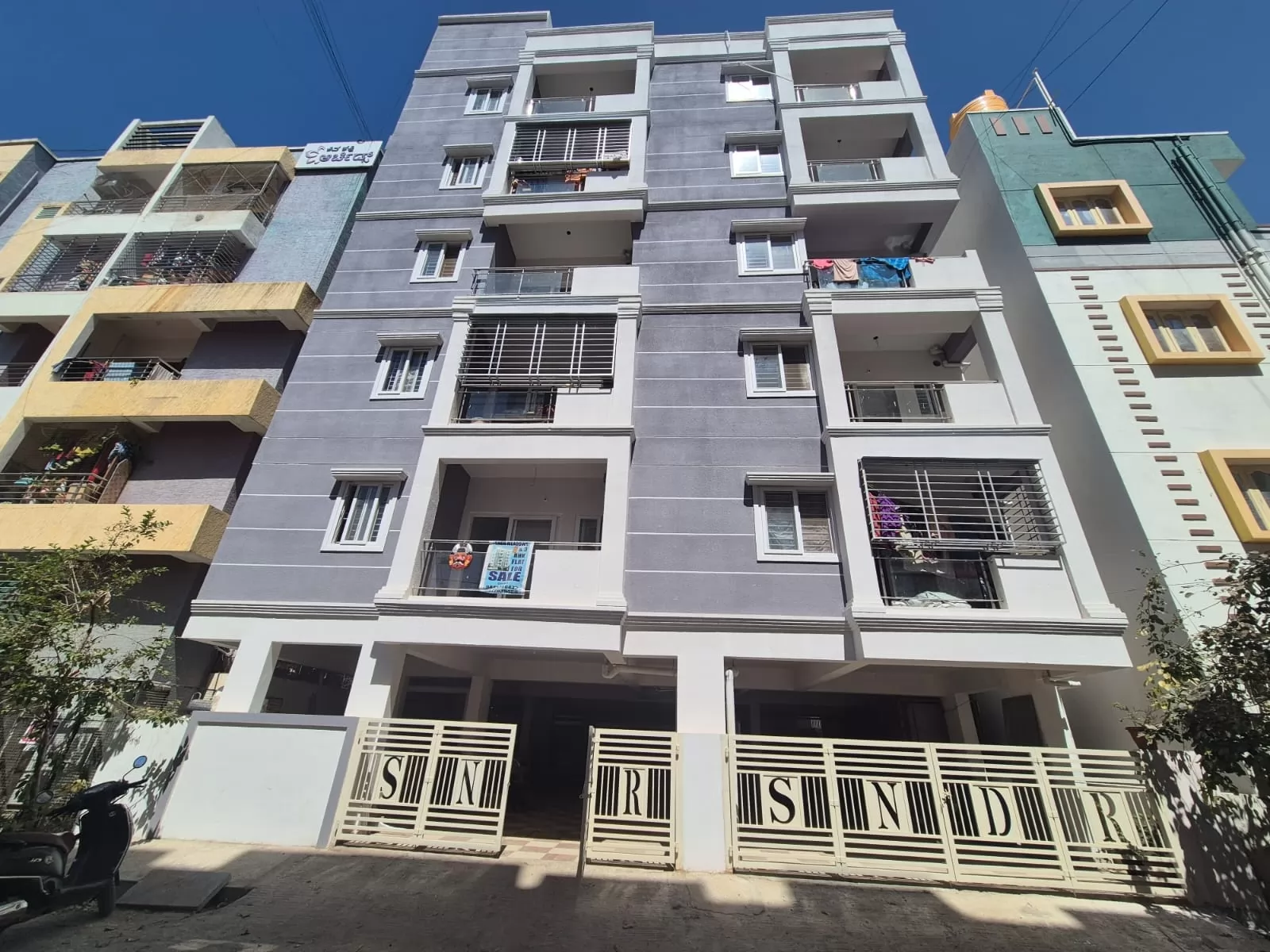What is the repo rate? How does it impact your home loan EMIs in 2025?
Bricksnwall Trusted Experts

Repo rates have a direct impact on home loan interest rates, which in turn affects loan costs and EMIs. Customers may maximise home loan affordability, manage repayments, and make well-informed decisions by being aware of this link. So, what is the repo rate, how does it impact home loan rates, and what are its long-term effects? Continue reading to learn more.
What is the repo rate?
The repo rate is the interest rate at which the
central bank of a country, like the Reserve Bank of India, loans money to commercial
banks when they are in need of funds.
However, when the repo rate is lowered, borrowing is encouraged and economic activity rises.
What Impact Does the Repo Rate Have on Interest Rates for Home Loans?
Since the repo rate is the price at which banks
borrow from the Reserve Bank of India (RBI), it has an indirect impact on
interest rates on home loans. Banks may modify lending rates to reflect the
updated borrowing costs when the repo rate is raised. Interest rates or EMIs
for house loans may alter as a result, especially for borrowers with
floating-rate loans.
Lowering the repo rate, on the other hand, lowers
borrowing costs for the banks, which in turn encourages them to drop home loan
interest rates, so lowering the EMIs or shortening the loan term.
A higher repo rate translates into a more expensive
loan for borrowers taking out new house loans, whereas a lower rate results in
less expensive loans. Fixed-rate loans stay the same until they are refinanced,
but floating-rate home loans fluctuate in tandem with the repo rate, which is
the interest rate at which the central bank lends to banks.
These analytics are essential for assessing a
borrower's ability to commit to a loan, which is especially important while
interest rates are fluctuating. Now, it's critical to comprehend how your EMIs
are affected by this rate modification.
How Does Your EMI Change When the Repo Rate Changes?
EMIs for house loans are directly impacted by
changes in repo rates, particularly when it comes to floating-rate loans. Banks
adjust their lending rates in response to changes in the Reserve Bank of
India's (RBI) repo rate, which means that borrowers must make payments at the
end of each month.
Note: As of January 14, 2025, the RBI has
maintained the 6.5% repo rate. Your current EMI would be about ₹52,000 if you
have a home loan of ₹60 lakh with a 20-year term and an interest rate of 8.5%.
EMI would climb to about 54,000 if the interest rate was raised to 9% as a
result of a repo rate hike, increasing the monthly outflow.
Instead of raising the EMI in some circumstances,
they might offer to extend the loan period. This would result in far larger
interest payments over the course of the loan, prolong the payback time, and
maintain the EMI.
However, financial institutions frequently inform
borrowers of any changes to EMIs or tenure so that they can properly plan their
repayments. Borrowers can better predict and control interest rate changes by
understanding these procedures.
Repo Rate's Effect on Home Loan Approvals
Home loan approvals are directly impacted by the
Reserve Bank of India's (RBI) repo rate in a number of ways:
Credit Availability: As a result of higher borrowing costs brought on by an elevated repo rate, banks may become more selective in their lending practices, which may lead to more stringent home loan approval procedures.
Borrower Eligibility: Higher interest rates may have an impact on borrowers' debt-to-income ratios, which may make it more difficult for them to satisfy the requirements needed to be approved for a loan.
Economic Conditions:
While high repo rates are intended to curb inflation, they may also impede
economic expansion, which may have an indirect effect on borrowers' ability to
repay debts and affect banks' lending choices.
Prospective homeowners must comprehend these
elements in order to successfully navigate the loan approval process.
Effects of the Repo Rate on Home Loans Over Time
Long-term effects of home loans are greatly
influenced by the Reserve Bank of India's (RBI) repo rate. Banks are forced to
raise interest rates on house loans when the RBI raises the repo rate because
they must pay more to borrow money.
The borrower will pay higher EMIs as a result. Over
time, the EMIs will cause a significant financial hardship if the loan term is
lengthy. On the other hand, a decrease in the repo rate lowers banks' borrowing
costs, which can slash sectoral loan rates, including home loans, and EMIs.
Even a small variation in the repo rate over time
can have a significant impact on the loan's cost. Borrowers may pay more in
interest throughout the course of the loan if interest rates continue to rise.
Borrowers should keep an eye on changes in repo rates and adjust their
repayment plans accordingly.
How Can You Guard Against Changes in Repo Rates?
To safeguard yourself against changes in repo
rates, heed the advice below:
Select set-rate loans: To ensure that your EMIs remain constant despite fluctuations in the repo rate, go for a house loan with a set rate.
Loan Prepayment: Make regular loan prepayments to minimise the debt and, consequently, the interest load.
Increase Loan Tenure: To make EMIs manageable in the event of rising rates, you can prolong the loan tenure.
Refinance Loan: When favourable rates become available, particularly if the repo rate falls, refinance your loan.
Track Trends in Repo Rates: Keep abreast of changes to the repo rate so that you can make timely lending decisions.
Keep Your Credit Score good:
You might get better rates and lessen the impact of rate increases if your
credit score is good.
India's Repo Rate Trends
India's repo rate has steadily increased over the
last five years. It increased from 4% in May 2020 to 6.50% in December 2024,
indicating measures taken to fight inflation. The Reserve Bank of India made
many changes, especially between 2022 and 2024, when rates progressively
increased by 0.5%.
The rate increased from 6.25% to 6.50% in 2023, marking the biggest spike. In order to reduce the excessive money supply, the RBI implemented inflation control measures, which played a major role in this hike. The repo rate affects loans, FD rates, and economic growth and is essential for managing liquidity and reining in inflation.
Closing
Making educated selections regarding house loans is facilitated by having a thorough understanding of the repo rate. Interest rates, EMIs, and eligibility are all directly impacted. To handle rate changes, keep abreast of trends and look into choices such as PNB Housing Home Loans.
- Repayment amounts may be impacted if you have a floating-rate loan because your EMI may go up or down in response to changes in the repo rate.
- In order to manage inflation, restrict liquidity, and stabilise the economy, the RBI modifies the repo rate, which affects borrowing costs and economic activity.
- An increase in repo rates raises house loan rates, which raises new homebuyers EMIs and total loan expenses.







